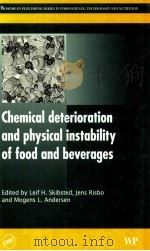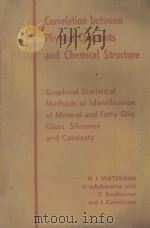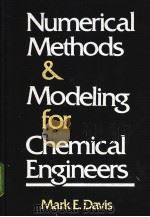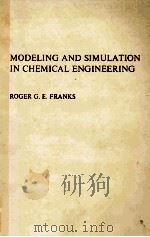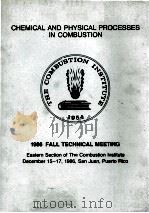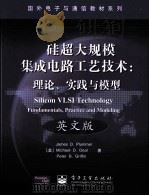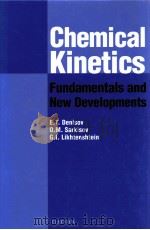《combustion physical and chemical fundamentals modeling and simmulation experiments pollutan》
| 作者 | j. warnatz u. maas r.w di 编者 |
|---|---|
| 出版 | prof. dr. dr. h. c. |
| 参考页数 | 379 |
| 出版时间 | 没有确切时间的资料 目录预览 |
| ISBN号 | 354025992 — 求助条款 |
| PDF编号 | 813125618(仅供预览,未存储实际文件) |
| 求助格式 | 扫描PDF(若分多册发行,每次仅能受理1册) |
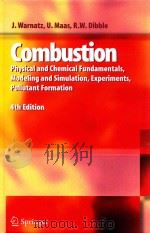
1Introduction,Fundamental Definitions and Phenomena1
1.1 Introduction1
1.2 Some Fundamental Definitions1
1.3 Basic Flame Types4
1.4 Exercises8
2Experimental Investigation of Flames9
2.1 Velocity Measurements10
2.2 Density Measurement11
2.3 Concentration Measurements13
2.4 Temperature Measurements18
2.5 Pressure Measurements20
2.6 Measurement of Particle Sizes21
2.7 Simultaneous Diagnostics22
2.8 Exercises27
3Mathematical Description of Premixed Laminar Flat Flames29
3.1 Conservation Equations for Laminar Flat Premixed Flames29
3.2 Heat and Mass Transport33
3.3 The Description of a Laminar Premixed Flat Flame Front33
3.4 Exercises38
4Thermodynamics of Combustion Processes39
4.1 The First Law of Thermodynamics39
4.2 Standard Enthalpies of Formation41
4.3 Heat Capacities43
4.4 The Second Law of Thermodynamics44
4.5 The Third Law of Thermodynamics45
4.6 Equilibrium Criteria and Thermodynamic Variables46
4.7 Equilibrium in Gas Mixtures; Chemical Potential47
4.8 Determination of Equilibrium Compositions in Gases49
4.9 Determination of Adiabatic Flame Temperatures51
4.10 Tabulation of Thermodynamic Data52
4.11 Exercises55
5Transport Phenomena57
5.1 A Simple Physical Model of Transport Processes57
5.2 Heat Conduction in Gases60
5.3 Viscosity of Gases62
5.4 Diffusion in Gases64
5.5 Thermal Diffusion,Dufour Effect,and Pressure Diffusion66
5.6 Comparison with Experiments67
5.7 Exercises71
6Chemical Kinetics73
6.1 Rate Laws and Reaction Orders73
6.2 Relation of Forward and Reverse Reactions75
6.3 Elementary Reactions,Reaction Molecularity75
6.4 Experimental Investigation of Elementary Reactions77
6.5 Temperature Dependence of Rate Coefficients79
6.6 Pressure Dependence of Rate Coefficients81
6.7 Surface Reactions84
6.8 Exercises88
7.Reaction Mechanisms91
7.1Characteristics of Reaction Mechanisms91
7.1.1 Quasi-Steady States92
7.1.2 Partial Equilibrium94
7.2Analysis of Reaction Mechanisms97
7.2.1 Sensitivity Analysis97
7.2.2 Reaction Flow Analysis101
7.2.3 Eigenvalue Analyses of Chemical Reaction Systems103
7.3 Stiffness of Ordinary Differential Equation Systems107
7.4 Simplification of Reaction Mechanisms107
7.5 Radical Chain Reactions115
7.6 Exercises117
8Laminar Premixed Flames119
8.1 Zeldovich’s Analysis of Flame Propagation119
8.2 Flame Structures121
8.3 Flame Velocities124
8.4 Sensitivity Analysis127
8.5 Exercises128
9Laminar Nonpremixed Flames129
9.1 Counterflow Nonpremixed Flames129
9.2 Laminar Jet Nonpremixed Flames133
9.3 Nonpremixed Flames With Fast Chemistry135
9.4 Exercises138
10Ignition Processes141
10.1 Semenov’s Analysis of Thermal Explosions142
10.2 Frank-Kamenetskii’s Analysis of Thermal Explosions143
10.3 Autoignition:Ignition Limits145
10.4 Autoignition:Ignition-Delay Time148
10.5 Induced Ignition,Minimum Ignition Energies149
10.6 Spark Ignition153
10.7 Detonations157
10.8 Exercises163
11Low-Temperature Oxidation,Engine Knock165
11.1 Fundamental Phenomena in Otto Engines165
11.2 Oxidation at Intermediate Temperatures168
11.3 Low-Temperature Oxidation169
11.4Ignition Processes in Reciprocating Engines173
11.4.1 Knock Damages in Otto Engines173
11.4.2 Ignition in Diesel Engines174
11.4.3 The HCCI Concept175
11.4.4 The DICI Concept177
11.5 Exercises178
12The Navier-Stokes-Equations for Three-Dimensional Reacting Flow179
12.1The Conservation Equations179
12.1.1 Overall Mass Conservation180
12.1.2 Species Mass Conservation181
12.1.3 Momentum Conservation181
12.1.4 Energy Conservation182
12.2The Empirical Laws183
12.2.1 Newton’s Law183
12.2.2 Fourier’s Law184
12.2.3 Fick’s Law andThermal Diffusion184
12.2.4 Calculation of the Transport Coefficients from Molecular Parameters185
12.3 Exercises185
13Turbulent Reacting Flows187
13.1 Some Fundamental Phenomena187
13.2 Direct Numerical Simulation189
13.3 Concepts for Turbulence Modeling:Time- and Favre-Averaging192
13.4 Reynolds-Averaged Navier-Stokes (RAMS) Equations194
13.5 Turbulence Models196
13.6 Mean Reaction Rates200
13.7 Concepts for Turbulence Modeling:Probability Density Functions202
13.8 Eddy-Break-Up Models206
13.9 Turbulent Scales207
13.10 Large-Eddy Simulation (LES)209
13.11 Exercises211
14Turbulent Nonpremixed Flames213
14.1 Nonpremixed Flames with Equilibrium Chemistry214
14.2 Finite-Rate Chemistry in Nonpremixed Flames217
14.3 Flame Extinction221
14.4 PDF-Simulations of Turbulent Non-Premixed Flames Using a Monte-Carlo Method224
14.5 Exercises226
15Turbulent Premixed Flames227
15.1 Classification of Turbulent Premixed Flames227
15.2Flamelet Models230
15.2.1 Flamelet Modelling Using a Reaction Progress Variable231
15.2.2 Flamelet Modelling Using a Level-Set Method232
15.3 Turbulent Flame Velocity233
15.4 Flame Extinction235
15.5 Other Models of Turbulent Premixed Combustion237
15.6 Exercises238
16Combustion of Liquid and Solid Fuels239
16.1Droplet Combustion239
16.1.1 Combustion of Single Droplets240
16.1.2 Combustion of Droplet Groups244
16.2Spray Combustion246
16.2.1 Formation of Sprays246
16.2.2 Spray Combustion Modes247
16.2.3 Statistical Description of Sprays249
16.2.4 Modeling of Turbulent Spray Combustion252
16.2.5 Flamelet-Type Models for Spray Combustion253
16.3Coal Combustion255
16.3.1 Pyrolysis of Coal255
16.3.2 Burning of Volatile Compounds256
16.3.3 Burning of the Coke256
16.3.4 Coal Gasification257
16.4 Exercises258
17Formation of Nitric Oxides259
17.1 Thermal NO (Zeldovich NO)259
17.2 Prompt NO (Fenimore NO)262
17.3 NO Generated via Nitrous Oxide265
17.4 Conversion of Fuel Nitrogen into NO265
17.5 NO Reduction by Combustion Modifications267
17.6 Catalytic Combustion271
17.7 NO Reduction by Post-Combustion Processes272
17.8 Exercises275
18Formation of Hydrocarbons and Soot277
18.1Unburnt Hydrocarbons277
18.1.1 Flame Extinction Due to Strain278
18.1.2 Flame Extinction at Walls and in Gaps278
18.2 Formation of Polycyclic Aromatic Hydrocarbons (PAH)280
18.3 The Phenomenology of Soot Formation283
18.4 Modelling and Simulation of Soot Formation287
18.5 Exercises296
19Effects of Combustion Processes on the Atmosphere297
19.1The Structure of the Atmosphere297
19.1.1 Pressure in the Atmosphere297
19.1.2 Temperature and Classification of Compartments in the Atmosphere299
19.1.3 Composition of the Atmosphere300
19.2.The Atmosphere as a Photochemical System300
19.2.1 Lambert-Beer Law300
19.2.2 Stem-Vollmer Equation301
19.2.3 Formation of Photochemical Layers302
19.3Incoming Sun Radiation,Photochemical Primary Processes303
19.4.Physical Processes in the Atmosphere305
19.4.1 Conservation of the Mass of Species305
19.4.2 Conservation of Energy306
19.4.3 Solution of the Conservation Equations307
19.5Chemistry of the Unpolluted Atmosphere307
19.5.1 Pure Oxygen Atmosphere307
19.5.2 Oxygen-Nitrogen-Hydrogen-Carbon Atmosphere308
19.6Chemistry of the Polluted Atmosphere310
19.6.1 Photochemical Smog310
19.6.2 Supersonic Transports314
19.6.3 Green-House Effect315
19.6.4 Acid rain316
19.7 The Role of Combustion Sources in Atmospheric Pollution317
20Appendix 1:Mathematics319
20.1Some Definitions and Laws for Vectors and Tensors319
20.2.1 Formulation of the Problem320
20.2.2 General Remarks on Solution Algorithms for ODE Systems321
20.2.3 Euler Method322
20.2.4 Extrapolation Method324
20.3Numerical Solution of Partial Differential Equation Systems325
20.3.1 Spatial Discretization326
20.3.2 Initial Values,Boundary Conditions,Stationary Solution328
20.3.3 Explicit Solution Methods329
20.3.4 Implicit Solution Methods330
20.3.5 Semi-implicit Solution of Partial Differential Equations330
20.3.6 Implicit Solution of Partial Differential Equations331
21Appendix 2:Reaction Mechanisms333
21.1 Mechanism of the Oxidation of H2,CO,C1 and C2 Hydrocarbons333
21.2 Reaction Mechanism of the Generation and Consumption of NOx340
22References345
23Index367
《combustion physical and chemical fundamentals modeling and simmulation experiments pollutan》由于是年代较久的资料都绝版了,几乎不可能购买到实物。如果大家为了学习确实需要,可向博主求助其电子版PDF文件(由j. warnatz u. maas r.w di prof. dr. dr. h. c. 出版的版本) 。对合法合规的求助,我会当即受理并将下载地址发送给你。
高度相关资料
-
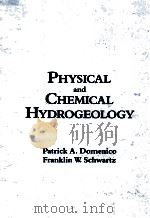
- PHYSICAL AND CHEMICAL HYDROGEOLOGY
- 1990 JOHN WILEY SONS
-
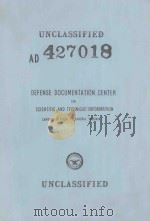
- FUNCTION MODELING EXPERIMENTS
- 1963 DEPT. OF COMMERCE
-
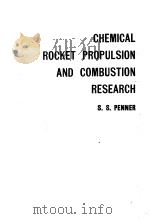
- CHEMICAL ROCKET PROPULSION AND COMBUSTION RESEARCH
- 1962 GORDON AND BREACH
-

- Chemical topology : introduction and fundamentals
- 1999 Gordon and Breach Science
-
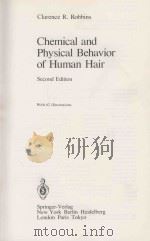
- CHEMICAL AND PHYSICAL BEHAVIOR OF HUMAN HAIR
- 1988 SPRINGER-VERLAG
-
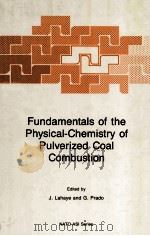
- Fundamentals of the Physical-Chemistry of Pulverized Coal Combustion
- 1987 Martinus Niijhoff Publishers
提示:百度云已更名为百度网盘(百度盘),天翼云盘、微盘下载地址……暂未提供。➥ PDF文字可复制化或转WORD

